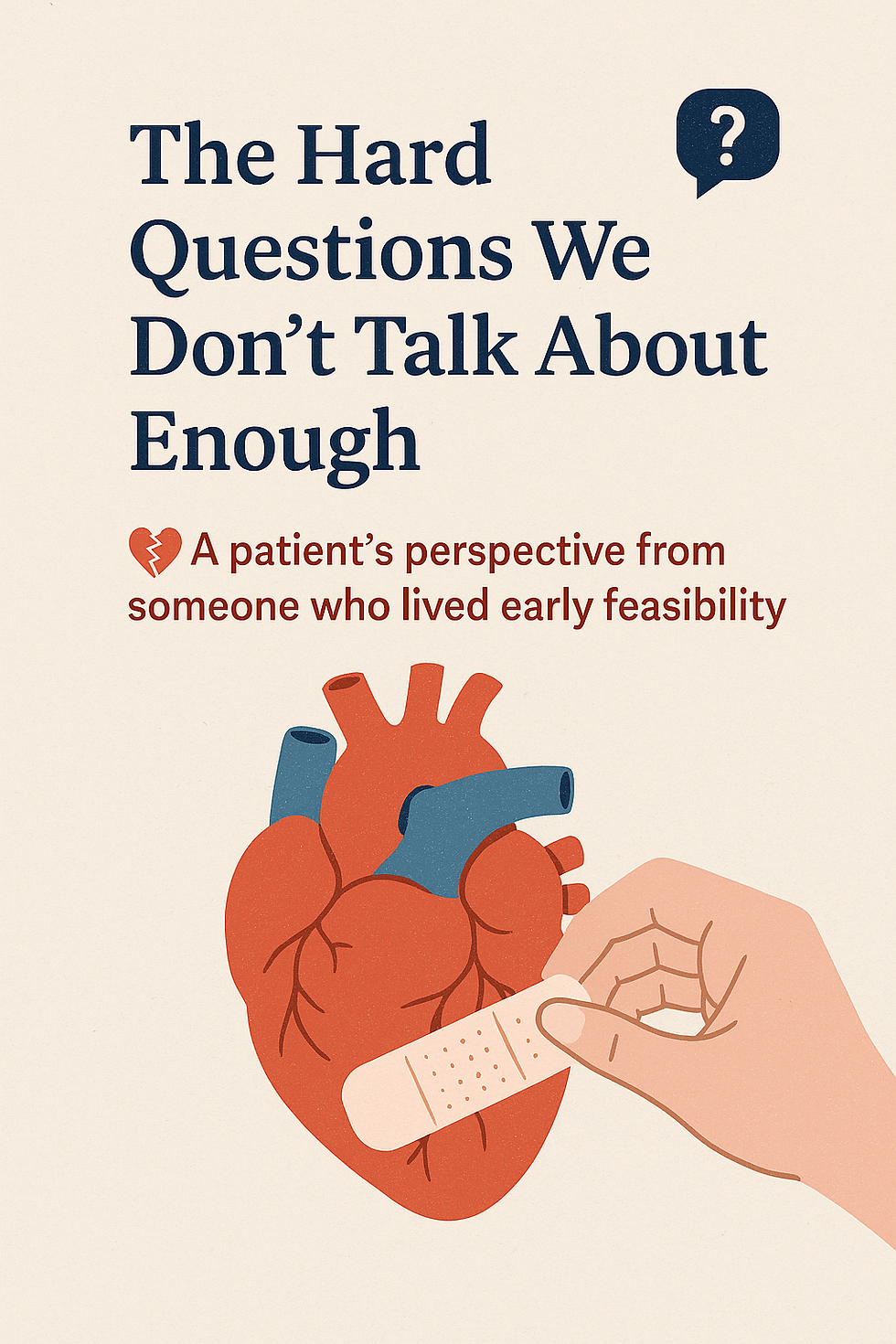From Intensive Follow-Up to Silence
- maryrburrell
- Aug 21
- 2 min read
Early follow-ups kept me seen. Then came the silence. As part of an Early Feasibility Study, my first year after receiving a transcatheter tricuspid valve was full of structured follow-ups.
Regular visits. Detailed questions. Frequent testing.
I felt like my experience mattered.
But after that first year? Everything stopped.
The trial shifted to annual check-ins, and I was reduced to a single reminder on someone’s calendar.
“See you in a year.”
For a patient who had survived hospice and undergone a life-changing procedure, the sudden silence was jarring.
No roadmap.
No real-time support.
No context for how my experience fit into the study I had given my body to.
At 2 a.m., when swelling or fatigue crept in, I had no plain-language guide, no direct point of contact, no peer who could tell me, “Yes, I’ve been there too.”

What Is an Early Feasibility Study?
Early Feasibility Studies (EFS) are the very first step in testing new medical devices in people. They usually include a very small group of patients (sometimes fewer than 15–30) and are designed to answer one big question: Can this device be safely used in humans?
EFS are not meant to provide full answers about long-term outcomes. Instead, they help researchers refine the device, the procedure, and the study design before moving into larger clinical trials.
For patients, this often means:
Frequent follow-ups in the first year.
Detailed data collection (labs, imaging, quality of life surveys).
Intense focus on procedure and device safety.
But after that first year, many patients experience what I did: a sudden shift to minimal follow-up, leaving long stretches of silence.
Why This Matters
Early feasibility trials answer important scientific questions. But they rarely answer the human question: How do patients live with it—day to day, year to year?
Without structured support beyond 12 months, patients are left floundering.
At 2 a.m., when fear sets in, it’s not the endpoints of a study that matter. It’s the human need for guidance, reassurance, and connection.
What Patients Deserve
A clear contact card – names, direct numbers, and when to call.
Plain-language milestones – what’s normal at 1 month, 3 months, 6 months, 1 year.
Monthly touchpoints – even 10 minutes to check in.
Trial transparency – goals, endpoints, and why they matter to me.
Peer mentors – one or two steps ahead.
A caregiver roadmap – so support doesn’t collapse at home.
Building the Bridge
When I didn’t get these things, I created them.
That’s why I founded HeartBridge Collective—to fill the silence with patient-led guidance, mentorship, and connection.
Because clinical science tests devices. But patients have to live with them.
HeartBridge Collective is still growing. We’re building the tools, resources, and connections I wish I had in those silent months after my procedure.
If this resonates with you—whether you’re a patient, caregiver, or professional—know that your voice matters. Change begins with conversations like these.
👉 Follow along, share your story, and walk with us as we build the bridge together.



Comments